 Today Brett and I made our first stop on our experiment.com - funded trip to collect data on mastodon tooth proportions: Louisiana State University.I received my Ph.D. from LSU in 1998, and this was only the second time I've been on campus since graduating. My graduate advisor, Dr. Judith Schiebout, is still at LSU, and Dr. Ting Suyin, who was a graduate student the same time I was there, is now LSU's vertebrate fossil collections manager:
Today Brett and I made our first stop on our experiment.com - funded trip to collect data on mastodon tooth proportions: Louisiana State University.I received my Ph.D. from LSU in 1998, and this was only the second time I've been on campus since graduating. My graduate advisor, Dr. Judith Schiebout, is still at LSU, and Dr. Ting Suyin, who was a graduate student the same time I was there, is now LSU's vertebrate fossil collections manager: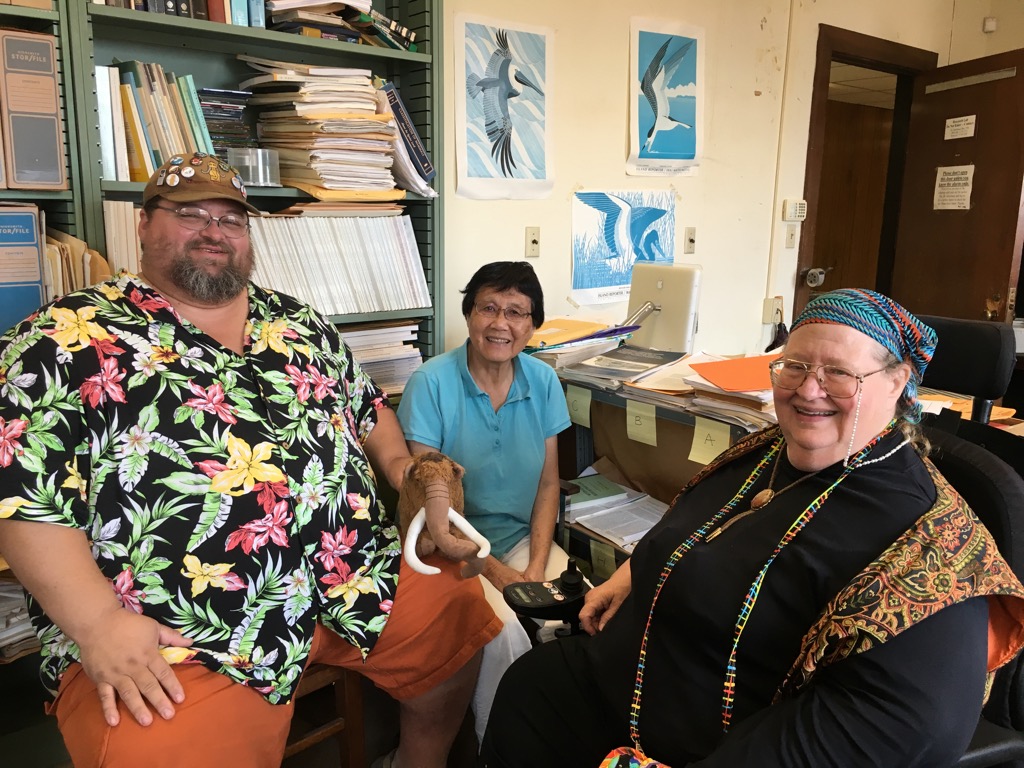 Of course, our real reason for being here was to measure mastodons. We collected measurements and photographs for 17 teeth, although only 13 are suitable for the database (the others are too poorly preserved for a complete set of measurements).While the tooth proportions of the Louisiana specimens were about what we would expect for teeth from the Gulf Coast (relatively much wider than California specimens), I was struck by how large some of these teeth are. The tooth at the top, an upper 3rd molar from the Tunica Hills region, is a pretty large tooth that is both longer and wider than any California tooth. But even it was dwarfed by this monster from Baton Rouge:
Of course, our real reason for being here was to measure mastodons. We collected measurements and photographs for 17 teeth, although only 13 are suitable for the database (the others are too poorly preserved for a complete set of measurements).While the tooth proportions of the Louisiana specimens were about what we would expect for teeth from the Gulf Coast (relatively much wider than California specimens), I was struck by how large some of these teeth are. The tooth at the top, an upper 3rd molar from the Tunica Hills region, is a pretty large tooth that is both longer and wider than any California tooth. But even it was dwarfed by this monster from Baton Rouge: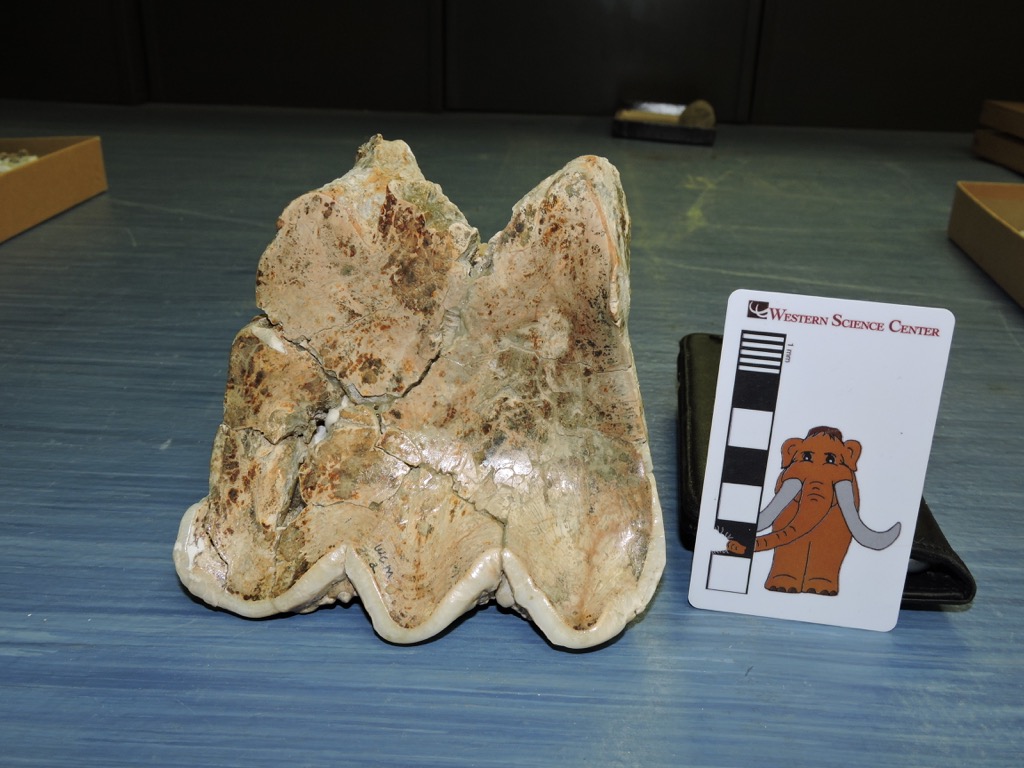
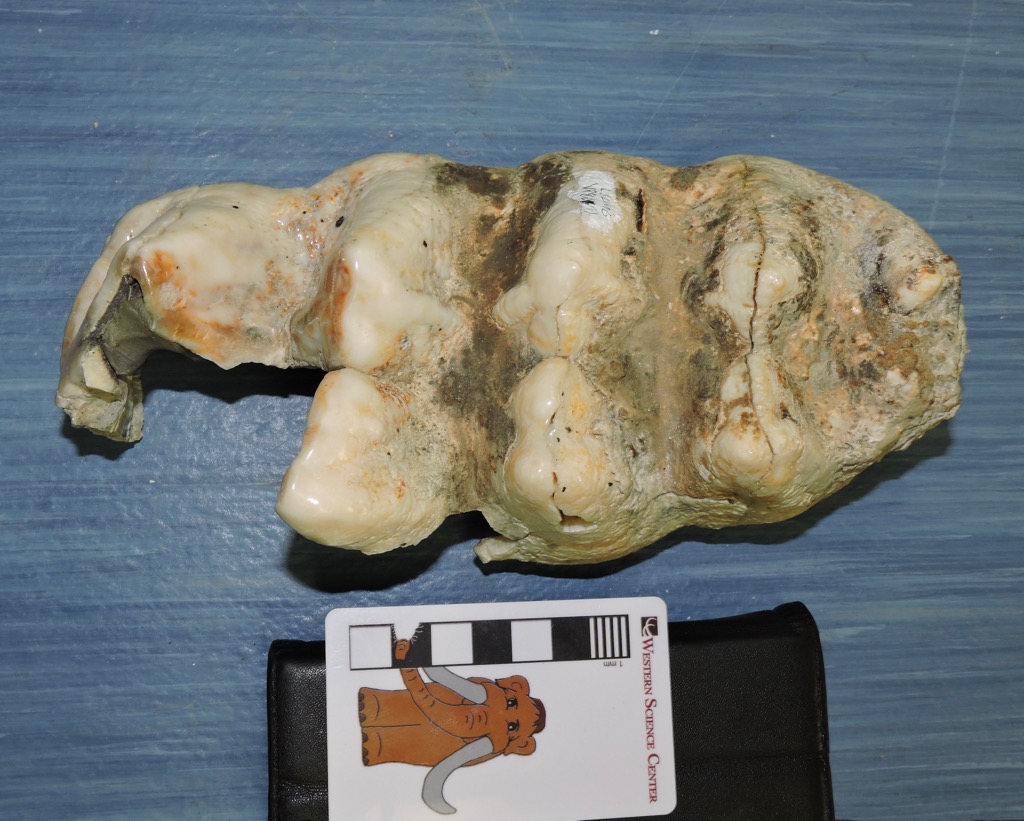 These are occlusal views of the upper right 2nd molar and lower right 3rd molar; the 3rd molar is damaged, so we don't have the full width. These teeth are absolutely enormous. The 3rd molar is the second longest tooth in our database, and is more than 2.5 cm longer than any California m3. The M2 is 117.7 mm wide, the only M2 in our data set that's more than 100 mm wide!Below, Brett is holding a maxilla fragment with an M3 from another Louisiana specimen we measured today:
These are occlusal views of the upper right 2nd molar and lower right 3rd molar; the 3rd molar is damaged, so we don't have the full width. These teeth are absolutely enormous. The 3rd molar is the second longest tooth in our database, and is more than 2.5 cm longer than any California m3. The M2 is 117.7 mm wide, the only M2 in our data set that's more than 100 mm wide!Below, Brett is holding a maxilla fragment with an M3 from another Louisiana specimen we measured today: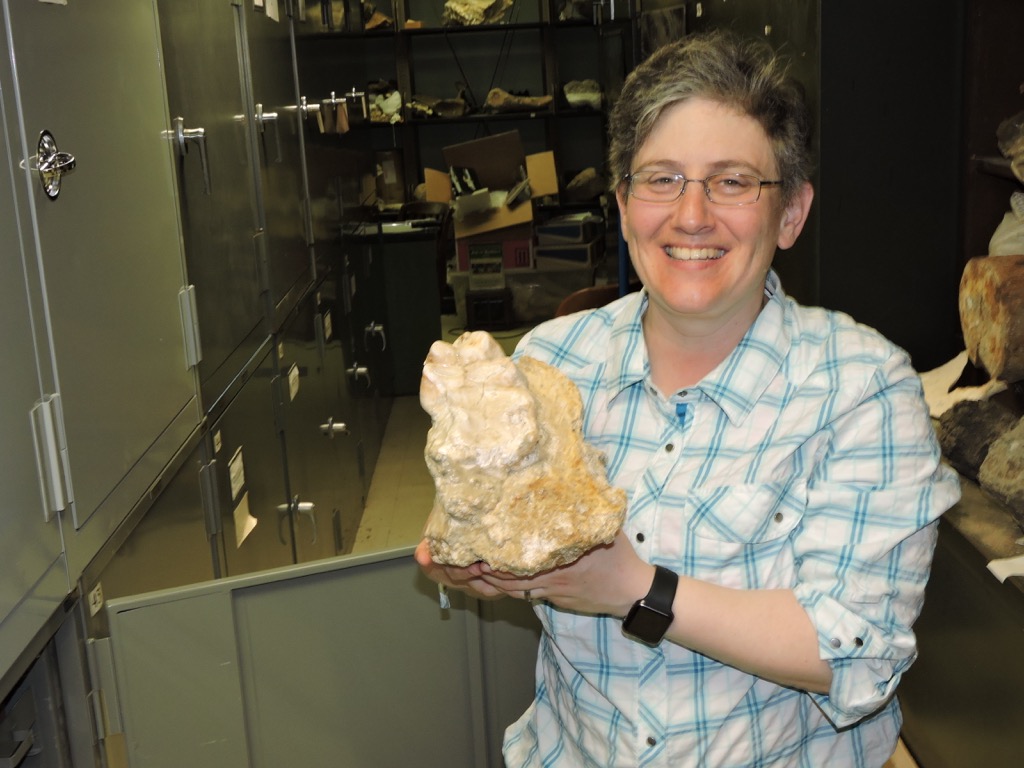 This specimen is special to me, because Brett and I led the excavation that recovered it. Brett and I were married in 1994, and after our honeymoon we drove to Baton Rouge where I was enrolled as a graduate student and Brett was starting a job as a lab technician for Dr. Schiebout. Immediately after we arrived we were called out to Angola, Louisiana to examine possible fossils that had been uncovered during a construction project at the Louisiana State Penitentiary. The remains turned out to be this specimen, and over the next several weeks Brett and I led an LSU crew on an excavation at the prison (this remains the only mastodon I've ever personally excavated, and the only time I've run an excavation inside a prison!). At the time we received a good deal of local media coverage, which only intensified when during the course of the excavation we discovered an unmarked and eroding 1800's-era cemetery directly above the excavation site. The photos below originally ran in the Baton Rouge Advocate, showing archaeologists working on the cemetery site at the top of the hill while we paleontologists simultaneously worked on the mastodon below them, and a closeup of the archaeological site:
This specimen is special to me, because Brett and I led the excavation that recovered it. Brett and I were married in 1994, and after our honeymoon we drove to Baton Rouge where I was enrolled as a graduate student and Brett was starting a job as a lab technician for Dr. Schiebout. Immediately after we arrived we were called out to Angola, Louisiana to examine possible fossils that had been uncovered during a construction project at the Louisiana State Penitentiary. The remains turned out to be this specimen, and over the next several weeks Brett and I led an LSU crew on an excavation at the prison (this remains the only mastodon I've ever personally excavated, and the only time I've run an excavation inside a prison!). At the time we received a good deal of local media coverage, which only intensified when during the course of the excavation we discovered an unmarked and eroding 1800's-era cemetery directly above the excavation site. The photos below originally ran in the Baton Rouge Advocate, showing archaeologists working on the cemetery site at the top of the hill while we paleontologists simultaneously worked on the mastodon below them, and a closeup of the archaeological site: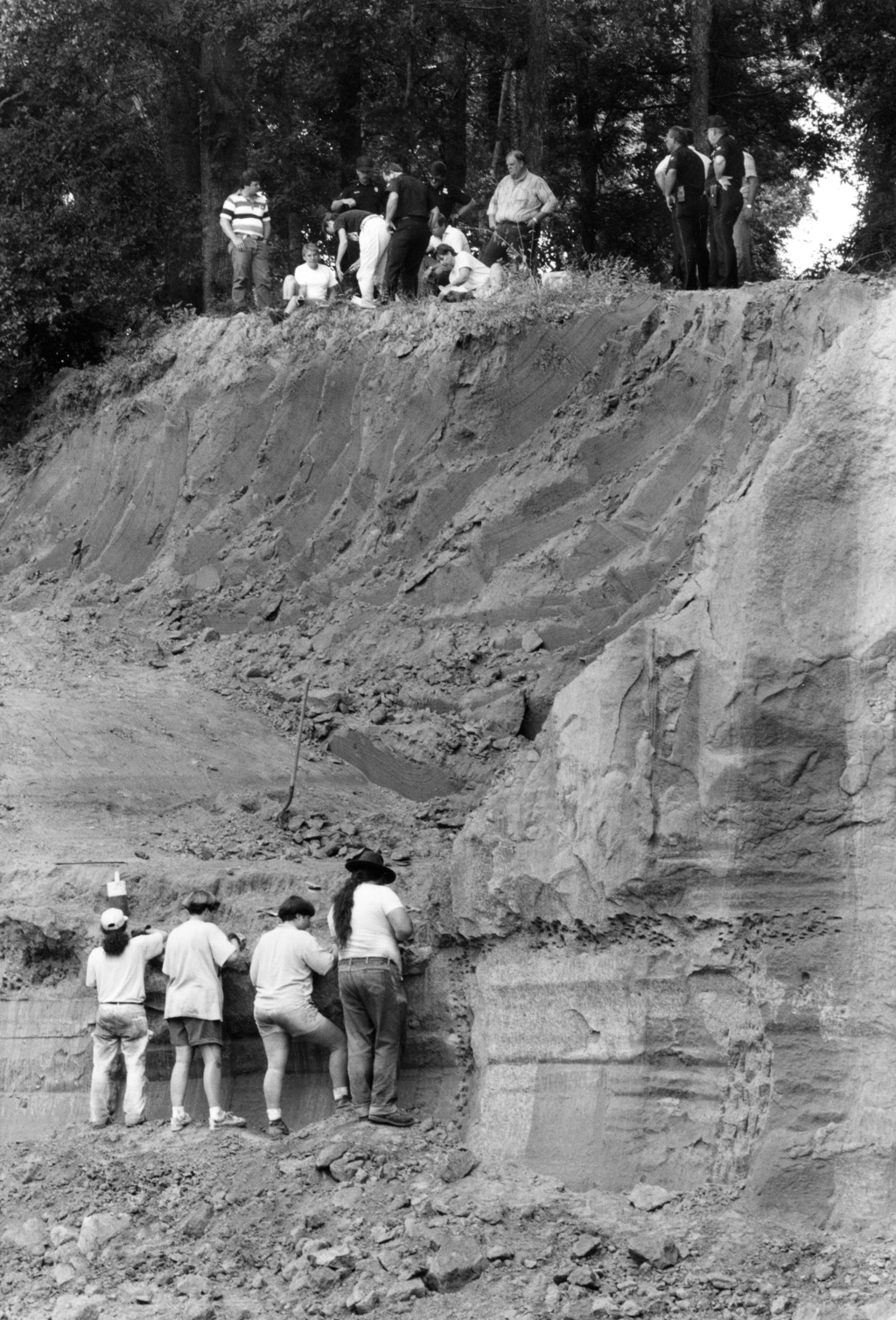
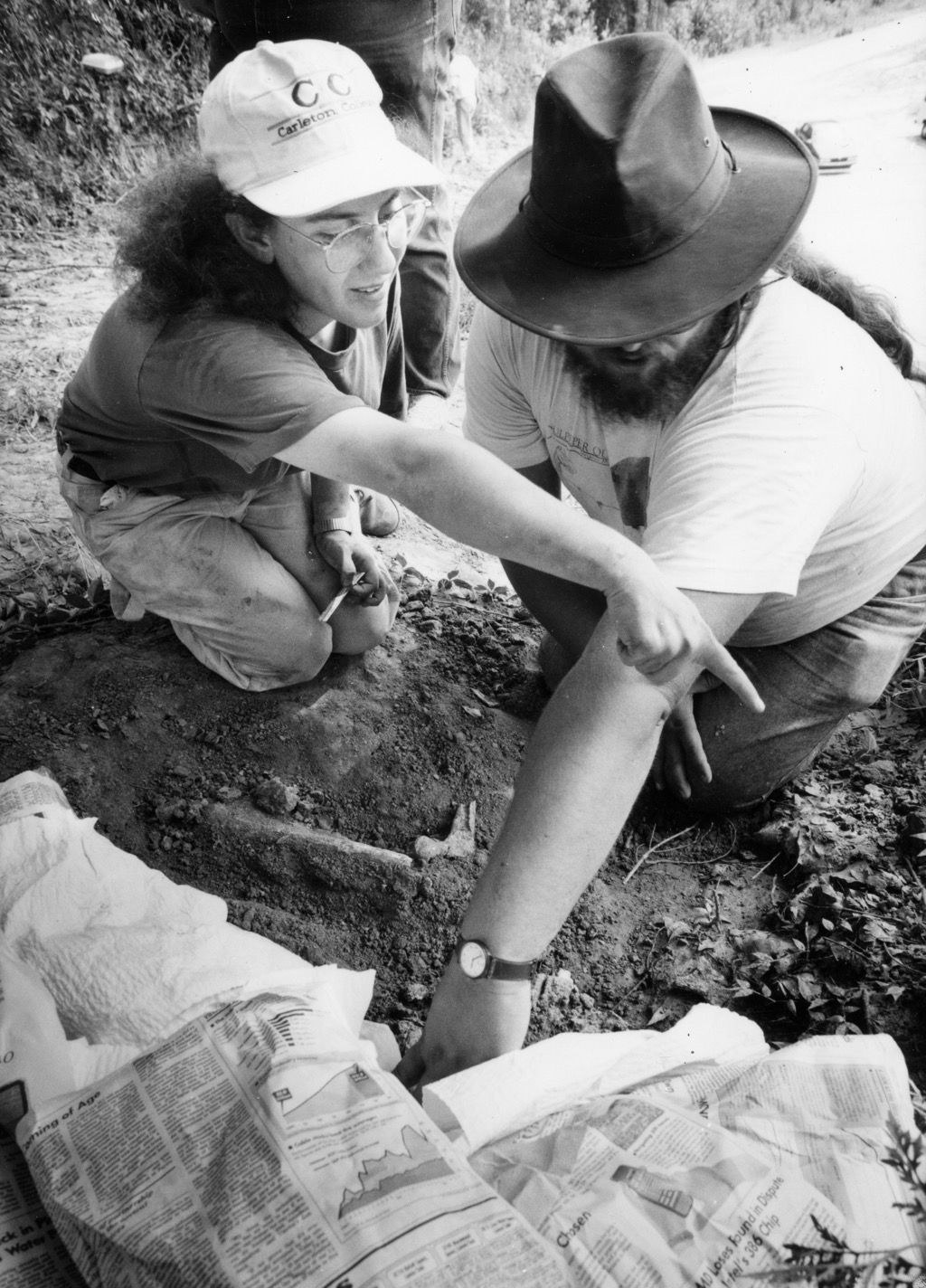 (That really is Brett and me, 22 years ago!)After documentation, the human remains were reburied in a new location. The mastodon remained in jackets until after I graduated, and was finally prepared sometime after 2000. Today was the first time Brett and I had seen the specimen since excavating it in 1994!Tomorrow we leave Baton Rouge and head north to visit more museums. Follow along here and on Max's Twitter feed (@MaxMastodon) and at #MastodonsOfUnusualSize.
(That really is Brett and me, 22 years ago!)After documentation, the human remains were reburied in a new location. The mastodon remained in jackets until after I graduated, and was finally prepared sometime after 2000. Today was the first time Brett and I had seen the specimen since excavating it in 1994!Tomorrow we leave Baton Rouge and head north to visit more museums. Follow along here and on Max's Twitter feed (@MaxMastodon) and at #MastodonsOfUnusualSize.

